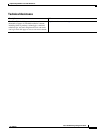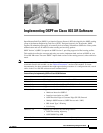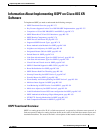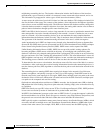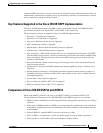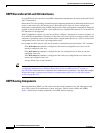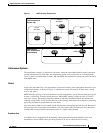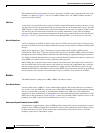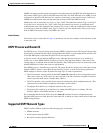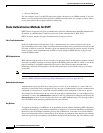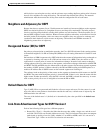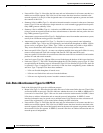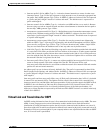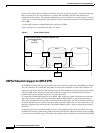
Implementing OSPF on Cisco IOS XR Software
Information About Implementing OSPF on Cisco IOS XR Software
RC-177
Cisco IOS XR Routing Configuration Guide
OL-14356-01
Figure 1 OSPF Routing Components
Autonomous Systems
The autonomous system is a collection of networks, under the same administrative control, that share
routing information with each other. An autonomous system is also referred to as a routing domain.
Figure 1 shows two autonomous systems: 109 and 65200. An autonomous system can consist of one or
more OSPF areas.
Areas
Areas allow the subdivision of an autonomous system into smaller, more manageable networks or sets
of adjacent networks. As shown in Figure 1, autonomous system 109 consists of three areas: Area 0,
Area 1, and Area 2.
OSPF hides the topology of an area from the rest of the autonomous system. The network topology for
an area is visible only to routers inside that area. When OSPF routing is within an area, it is called
intra-area routing. This routing limits the amount of link-state information flood into the network,
reducing routing traffic. It also reduces the size of the topology information in each router, conserving
processing and memory requirements in each router.
Also, the routers within an area cannot see the detailed network topology outside the area. Because of
this restricted view of topological information, you can control traffic flow between areas and reduce
routing traffic when the entire autonomous system is a single routing domain.
Backbone Area
A backbone area is responsible for distributing routing information between multiple areas of an
autonomous system. OSPF routing occurring outside of an area is called interarea routing.
88721
Area 2
stub area
Area 0
backbone
R2
R3
R1
Area 1
Area 3
ABR 2
OSPF Domain
(BGP autonomous
system 109)
OSPF Domain
(BGP autonomous
system 65200)
ABR 1
ASBR 1
ASBR 2



